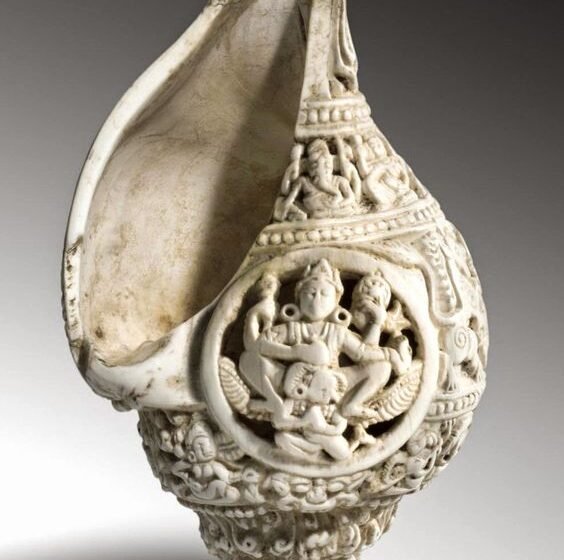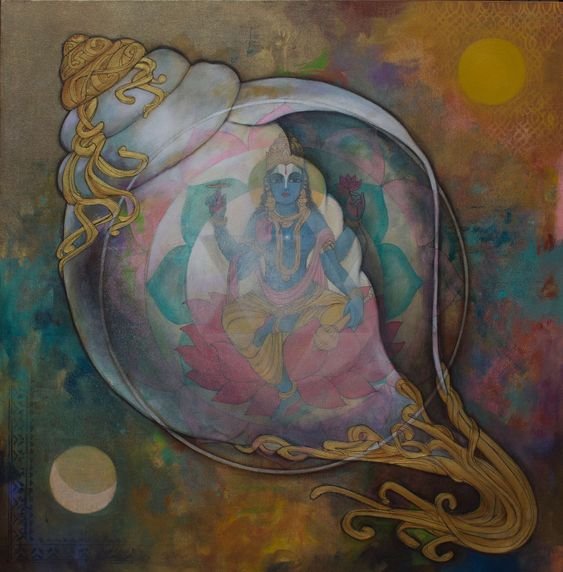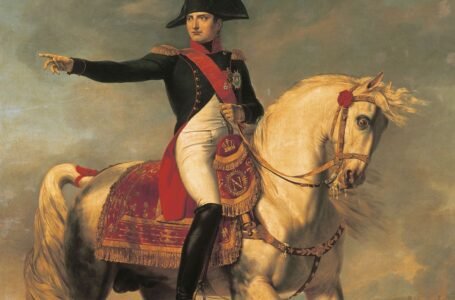Decoding Symbols of Hinduism: Conch or Shanka

Across the world the Conch is popularly known as the sea snail. In India, especially in Hinduism the Conch holds a place of significance in the ancient sacred text as well as in the religious practices. The Conch as the Sanskrit word Shanka first finds its mention around 1000 BCE in the ancient Vedic text of the country. The Shanka is mentioned in the fourth Vedic scripture called the Atharveda, where it is considered to have healing properties to it and that blowing the Shanka wards off evil and offers protection from the same.

In Hinduism it is believed that the origin of the Conch is intertwined with the stories of creation and divinity. In Hindu scriptures, it is said that the Conch shell came from the churning of the cosmic ocean, known as the Samudra Manthan. During this particular mythic event the Devas that is the celestial beings or divine beings and Asuras that is the demonds together churned the ocean of milk using Mount Mandara as the churning rod and Vasuki, the king of serpents, as the rope. This churning of the cosmic ocean was done in order to procure the elixir of immortality, known as Amrita. During this process, divine treasures and beings emerged from the milk ocean. One of these treasures was the Conch shell which appeared alongside other celestial objects like the divine cow, the wish fulfilling tree and the Apsaras. In the mythology it is also narrated that the Conch shell was retrieved by Lord Vishnu the preserver of the cosmic universe, by adopting the avatar of a tortoise to support Mount Mandara during the churning of the milk ocean. Lord Vishnu has sacrificed the conch shell and took it as one of his divine weapons, giving it a sacred importance in the mythology. His Conch is known as the Panchajanya.

In Hinduism, the Conch shell is associated with various Hindu gods and deities. However, the symbol is deeply respected and considered of sacred devotion of the Hindu god Vishnu, one of the creator deities in the mythology. In his iconography he is often depicted holding a conch shell or the Shanka in one of his four hands. When Vishnu blows the Conch, it signifies the beginning of a cosmic event.The Conch shell also represents the primordial sound of Om that emanated during the creation of the universe, symbolizing the cosmic vibration that permeates the universe, and the eternal cycle of life, death and rebirth. The spiral shape of the Conch represents evolution and the continuous journey of the soul towards enlightenment. Alongside Vishnu, the Conch is also said to be associated with goddess Lakshmi the consort of Vishnu. Lakshmi is depicted holding a Conch shell in one of her hands, symbolizing the auspiciousness she stands for. In Hindu iconography, the goddess is seen holding various attributes known as Ayudhas which symbolise her qualities and power. The conch shell is one of these Ayudhas representing purity, auspiciousness and the divine sound of creation. Her holding of the Conch shell is symbolic of her abilities to destroy evil, bestow blessings and bring prosperity, fertility and abundance.

In the epic tales of Hinduism, the Conch is mentioned in the battle of Mahabharta where it plays a significant symbolic role during the Kurukshetra War. The Conch is mentioned in the first initial chapters of the scriptures, narrating the event of Pandava Prince Arjuna receiving the Conch from Lord Krishna, and during the Kurukshetra War, where every warrior from both the Pandavas factions and the Kaurava factions blew their respective Conch shells to signal the beginning and ending of the war. It is also believed that Krishna an incarnation of the Supreme God Vishnu blew the Panchajanya to signal the commencement of the war, the Conch symbolising the cosmic war between the righteous and the unrighteous.

The Conch shell and its symbolic properties of divinity, healing and dispelling of evil, grants the symbol a significant place in Hindu rituals, ceremonies and practices. The Conch is typically used to invoke the Hindu deities at home and in the temples. It is usually blown at the beginning of the religious ceremonies as a form of invocation to seek divine blessings. The sound that the Conch produces is believe to hold reverberations of purity which cleanses the environment and transforms it into an atmosphere fit for worship. The Conch is blown to signify the beginning of religious rituals like puja, havan, and arati and sacred processions. Its sound signals the devotees to gather around and participate in the religious rituals. During prayers it is common for devotees to pour water into the Conch shell and pouring the same water from the shell again as an act of offering to the deities being worshiped. This act symbolizes devotion and respect towards the deity.

In Hindu art, the Conch shell often finds its depiction in various iconographies of the deities including in the forms of sculptures, paintings and other forms of representations of these deities. It is often portrayed as being held in one of the hands of the deities as a divine quality. Because of the symbols attributes of divinity and auspiciousness, the Conch shell is also depicted in Hindu art with other auspicious symbols like the Lotus flower or Padma, the Swastika, Kalasha etc. In architectural designs of the Hindu temples, the Conch shell motif is carved on the temple walls, pillars and doorways.

Because of its relation with the resonance of the primordial reverberations of Om, the blowing of the Conch shell is also inculcated in the practice of yoga and meditation. In yogic tradition and philosophy the Conch is considered as a tool for the awakening of the consciousness and the transcendence beyond the material world and unity with the cosmic universe. During meditation, the sound of the Conch shell is often used as a focal sound to concentrate upon, using its sounds as guidance into the deeper states of one’s mind and eventual peace.

Similar to its role in the Hindu epic tale of Mahabharta where the blowing of the Conch by Krishna emphasizes the restoration of order of the cosmos as well the Bharta dynasty, in the 1954 novel Lord of the Flies by William Golding, the author incorporates the Conch as a symbol of power and order on the island where the characters are scattered. This mystical symbol gathers these scattered boys together and acts as a beginning of leadership and order on the island. In Buddhism too the blowing of the Conch shell symbolizes the bringing of the assemblies together.

The Conch shell or the Shanka, from its earliest mention in a 1000 BCE old ancient text, its depiction in the epic tale of the biggest war of Mahabharta, its direct association with the Divine and incorporation within religious ceremonies, rituals and art and architecture, to the symbols influence in literature; the symbolism of the Conch holds a profound meaning of auspiciousness, divine order, a signal of beginning and the end, as well as a protector of the evil and healer of various ailments.


